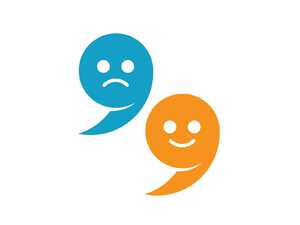Punctuation: Am I doing it right?
Finding the right home for all your punctuation might seem like a straightforward enough task. I mean, how hard can it be? A semicolon there; a em-dash here—hell, why not throw in a question mark...here?

Who Cares?
Does it really matter if we get our hyphens and dashes mixed up? Will anyone notice if a comma goes before or after a conjunction?
Well, maybe not, but for a copywriter doing their damndest to keep their content punchy and readable, thoughtfully-placed punctuation can be one of the most useful tools in their editorial belts.
Here’s a quick look at some of the most-used punctuation features and what on earth you should be doing with them.
How To Do Punctuation Well
' Apostrophe
An apostrophe knows how to keep it simple. It has two basic functions. Either to signify a possessive—a dog’s bark, a cat’s whisker—or to to shorten a word. If you’re trying to turn a does not into a doesn’t, an apostrophe will help replace those missing letters. Possession, contractions. That’s it.
, Comma
A comma’s main function is to add natural breaks to a sentence; to replicate the cadence and patterns of normal speech. If you’re trying to express a number of different ideas, a comma will signify a pause, allowing the reader to make sense of the information in front of them.
Think of a comma as a chance for the reader to draw breath. They’re also a handy device for separating list items, or adding an afterthought.
— Em dash
Not to be confused with an en dash or its even more slender counterpart, the hyphen, em dashes are superbly versatile. In the right context, an em dash can be used in place of a comma, parentheses or a colon.
Despite its multifunctionality, it’s best not to overuse them, or your quest for clarity within your writing will meet a grisly end.
; Semicolon
A semicolon suffers from somewhat of an identity crisis—a halfway house between a comma and a full stop, hence its appearance as a hybrid of the two punctuation marks. They’re most commonly used as a way of separating two closely linked ideas, two conflicting ideas, or as a means to divide items on a list.
() Patentheses
For any writer just bursting with afterthoughts and additional information, a neatly-placed parentheses (always in pairs) is a handy little tool. Material inside the parentheses might be a single word, fragments, multiple or fully-formed sentences.
Importantly, whatever information you house inside your rounded brackets, must not be grammatically essential to the surrounding sentence.
: Colon
When using the semicolon’s more self-assured cousin, it’s important to remember that the divided elements do not need to be complete sentences in their own right. You can use them to introduce a list, link two parts of a sentence thematically, or draw out a conclusion. Case and point: this.
- hyphen
A common mistake is to use a hyphen like an em or en dash, and employ it in place of a comma or colon. Which is understandable as they all look quite similar.
A standard hyphen, however, only functions as a means to separate compound words (ear-splitting), compound numbers (fifty-three), prefixes (post-modern), or to join two or more words serving as a single adjective before a noun (well-known).
... ellipsis
If you’ve got a great quote you want to use in your copy, but half the content is either irrelevant or just plain waffle, an ellipsis will help you block out the unwanted material and keep the gold. It’s a great way of streamlining quotations and presenting only the most pertinent information.
. period
Finally, an easy one. Use a full stop at the end of a complete sentence, unless it’s a question (?) or you wish to impart emphasis (!) In which case use the appropriate substitutes. Elsewhere, you can use a full stop in an initialism or abbreviation.
You know where you are with a full stop. Usually at the end of a sentence.
Let's eat Grandma.
Let's eat, Grandma.
Punctuation Saves Lives.

Final thoughts
It’s important to remember that language, grammar and punctuation are prescriptive by their use, and these rules don’t necessarily have to be hard and fast.
Just as it shouldn’t be a sackable offence to start a sentence with a preposition, nor should we get our proverbial undergarments in a knot if we forget to figure a comma splice into an overly-long sentence.
This is particularly true when we’re writing social media posts, when the guidelines can be a little more loose—as discussed in a previous edition.
Perhaps the take-home message is to treat punctuation as your friend; use it wisely to make your copy tighter, more expressive, and ultimately, more engaging.
Other Relevant Resources
There's always more to learn, we recommend these blogs:
Posted on April 5th 2021




